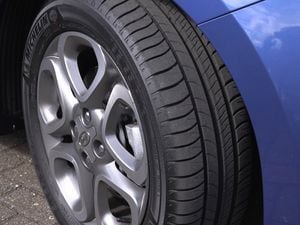How to make the most of your car’s tyres
Here are our tips for getting the most from your car’s tyres

As far as car parts go, tyres are one of the most important – but also one of the most neglected.
Tyres are the car’s only contact with the road, and as such can make a huge impact on not just the driving experience, but also vehicle safety.
To keep yourself safe on the road, and to also get the best out of your car, it’s important to maintain the rubber on each wheel. Here are our tips for making the most of your tyres.
Cheap isn’t always the best
While it may be tempting to go for those £40 tyres from a brand nobody’s ever heard of, you could be doing more harm to your wallet in the long run.
A good set of tyres may cost more, but you’re likely to get better grip from them — helping to keep you safe. They will usually have a longer life too, saving you more down the line.
If in doubt about which tyres to fit to your car, consult your vehicle owner’s manual for manufacturer recommendations.
Keep them well inflated

Underinflated tyres have a higher rolling resistance than those at the correct level, increasing wear on the sidewall. To keep your tyres lasting longer, regularly check pressures and keep them at manufacturer recommendations — which can be found in the owner’s manual, and inside the door sill of many cars.
Watch the tread

Tread is the part of the tyre that contacts the road, and as a result, wears out. Not only is it important to ensure you have a good amount of tread for your own safety, it’s also a legal requirement to have at least 1.6mm of it on all four tyres.
An easy way to tell if your tread is sufficient is to place a 20p coin between the grooves. If any part of the rim of the coin is visible, then it’s time to get a new set of rubber.
Optimise your driving style

Find your right foot often pinned to the floor? Brake heavily? Corner hard? You’re probably doing some harm to your tyres.
A smoother, more consistent driving style puts less stress on rubber and results in less wear — ultimately meaning more time between changes, and less hit on your wallet.
Stay aligned

If your car’s wheels have gone out of alignment, the tyres will see more stress on a smaller contact patch. The result is quicker and uneven wear.
If you notice an uneven level of wear, take your car to a specialist to have alignment checked and corrected if necessary.
Rotation equals elongation

No matter how careful your driving style, new your tyres are or even if they’ve all been fitted at the same time — they’re going to wear unevenly.
This is usually down to where the power is sent. On most cars, the fronts will wear much faster than the rears – in most cases, they’re tasked with delivering power to the road, steering, and most of the braking. To get more life out of your tyres, swap the fronts and rears — most mechanics will do this during a service or MOT anyway, but it’s always worth asking beforehand if you’re not confident of doing the task yourself.
Rotating your tyres is also a necessity on cars with a part-time four-wheel drive system. These systems require all four tyres to be virtually identical for the best performance.
Seasonal rubber

While all-season tyres can offer plenty of grip all year round, splashing out for season-specific tyres can keep prepared for all eventualities.
Although ultimately more expensive, having a set of rubber for both summer and winter can leave you safer on the roads and also see less time between buying new tyres. Summer compounds operate at higher temperatures, offering better grip in hotter weather and lasting longer than harder rubber — which could potentially blister on hot surfaces.
Winter tyres operate at lower temperatures and also tend to have much more tread — ideal for clearing rain, snow and slush in the colder months of the year.
Check the spare tyre

It’s easy to forget about looking after a spare tyre — after all, you’ll ideally never have to use it.
In the event of a tyre failure though, it’s going to come in handy, so you’ll want to ensure its prepared to keep you safe before putting on a replacement tyre. Ensure the rubber hasn’t perished, and that it’s inflated to a good level.





